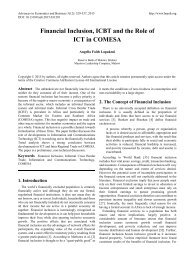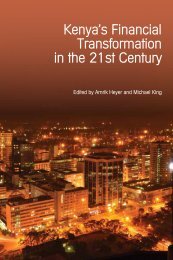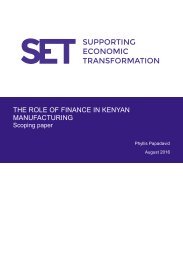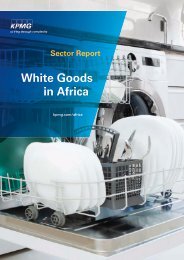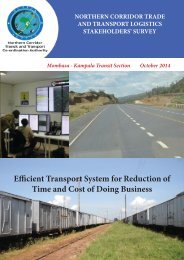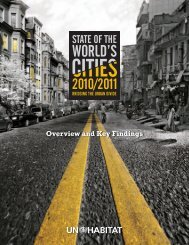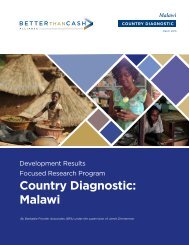FD
gvti301SEaf
gvti301SEaf
You also want an ePaper? Increase the reach of your titles
YUMPU automatically turns print PDFs into web optimized ePapers that Google loves.
Students working on a science experiment, Mvezo, South Africa.<br />
Kenya, Mozambique, Rwanda, Tanzania, and Uganda are still<br />
expected to grow by 5 percent or more this year.<br />
But countries across the region face several other longterm<br />
challenges, starting with weaknesses in infrastructure<br />
for power, roads, and water (see “Impediment to Growth” in<br />
this issue of F&D). World Bank researchers estimate that infrastructure<br />
deficiencies in Africa have reduced growth by more<br />
than 2 percentage points a year. Only about one-third of rural<br />
Africans live within two kilometers of an all-season road, compared<br />
with two-thirds in other regions. And while many parts<br />
of Africa have abundant water, the lack of water storage and<br />
irrigation facilities undermines economic activity. The impact<br />
of these shortages will only grow as climate change advances.<br />
Demographic shifts present another major test. Sub-Saharan<br />
Africa’s population is projected to climb from 965 million in<br />
2016 to 2.1 billion in 2050. Nigeria alone could have 400 million<br />
people by 2050, more than double its current size. Urban<br />
populations will grow especially quickly, posing major challenges<br />
in job creation, infrastructure, education, health, and<br />
agricultural production. But demographic shifts also provide<br />
an opportunity: history shows that population growth is not<br />
necessarily a constraint on growth. Larger urban populations,<br />
a growing share of working-age people, and increased female<br />
labor force participation all present opportunities to expand<br />
manufacturing and services—much as happened in Asia in<br />
recent decades—especially when accompanied by investment<br />
in infrastructure and education.<br />
Perhaps the most difficult challenge of all will be climate<br />
change. Temperatures in sub-Saharan Africa are expected to<br />
rise between 1.5 and 3 degrees Celsius by 2050, and weather<br />
patterns, temperatures, and rainfall are expected to be more<br />
erratic. There will be myriad effects, including a rise in sea<br />
level in coastal regions, lower water tables, more frequent<br />
storms, and adverse impacts on health. Arguably worst will be<br />
the blow to output and labor productivity in agriculture, the<br />
dominant source of income in Africa, especially for the poor.<br />
The road ahead<br />
Dealing with these challenges will test the skills of Africa’s<br />
new generation of leaders. But once again, the effects are likely<br />
to vary widely: countries with the most diverse export bases<br />
will probably be affected the least, while those with narrow<br />
export bases and weak governance will suffer most. Continued<br />
long-term progress through this challenging period calls<br />
for action in four areas.<br />
First up is adroit macroeconomic management. Widening<br />
trade deficits are putting pressure on foreign exchange<br />
reserves and currencies, tempting policymakers to try to<br />
artificially hold exchange rates stable. Parallel exchange rates<br />
have begun to emerge in several countries. But since commodity<br />
prices are expected to remain low, defending fixed<br />
exchange rates is likely to lead to even bigger and more<br />
difficult exchange rate adjustments down the line. As difficult<br />
as it may be, countries must allow their currencies to<br />
depreciate to encourage exports, discourage imports, and<br />
maintain reserves. At the same time, budget deficits are<br />
widening, and with borrowing options limited, closing the<br />
gaps requires difficult choices. At the core will be the ability<br />
to mobilize domestic resources and increase tax revenues,<br />
which will allow countries to control deficits while financing<br />
critical investments in roads, power, schools, and clinics.<br />
The amounts involved are significant: Every 1 percentage<br />
point increase in revenue as a share of GDP for sub-Saharan<br />
Africa as a whole raises an additional $17 billion a year. In<br />
10 Finance & Development June 2016




